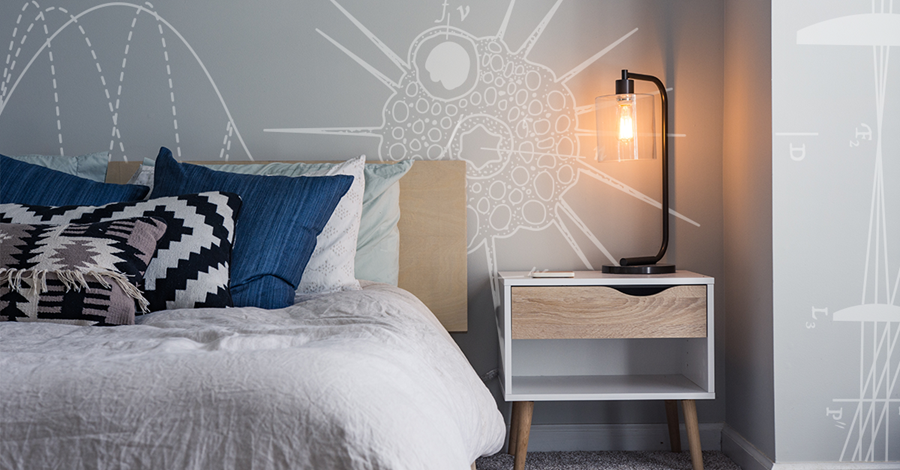STEM Principles Help Make Restful Sleep
Sam Broder-Fingert |
February 19, 2019

We all know the terrible feeling that follows a poor night’s sleep, but fewer people are fully aware of all the science, technology, engineering and math associated with the products that help us get restful sleep. In fact, it’s a fair guess that the thought of math and science at bedtime could be a nightmare for too many people.
At SpaceFoamTM, we’re not only fascinated by the history and ingenuity of NASA and the U.S. space program. We’re inspired to use STEM principles in everything from material development to product design, packaging and shipping. And because we know the value of STEM skills and knowledge, we’re happy to support the National Math and Science Initiative.
Here’s just a bit of the STEM principles behind our SpaceFoam pillow:
Statistics
Consumer research shows that temperature is one of the biggest factors people identify as disturbing their sleep. This and additional surveying informed how we developed the foam that makes up the core of our pillow, as well as the material selection and design of the cover.
Biology
Our material development and selection also was informed by analysis from the University of Manchester, which found that 16 species of fungi live in a typical pillow. Add in dust mites, skin and sweat and it’s no wonder we toss and turn.
Physics and Chemistry
Viscosity is a fancy way of describing the balance between firmness and elasticity. It’s important because things like pillows and mattresses (and even jet pilot seats) need to provide support while adjusting to people’s weight and position and quickly bouncing back as people move. Fortunately, there are nontoxic chemicals and development methods to make materials that are lightweight, supportive and responsive.
Environmental Testing
Speaking of chemicals, some memory foams have compounds that can cause harmful off-gassing. We’re proud to use CertiPUR-US certified foam that’s been analyzed by independent and accredited laboratories for ozone depleters, heavy metals and volatile organic compounds.
Engineering and Geometry
Efficiently getting products from factories to homes in environmentally friendly ways is a Herculean task. Engineers and logistics planners use about every type of math you could imagine.
Last but not least, History!
The boldness of astronauts gives us all a sense of wonder of what it would like to sleep in space. We’re fascinated with all the missions and innovations from NASA that have helped take mankind into new heights outside the Earth’s atmosphere.
One of those innovations is memory foam: In 1966, NASA began developing memory foam to create aircraft seat cushions that would help relieve the impact of take-off and landing for astronauts. This material has come a long way since then, and we’re proud that one of the ways it has evolved is to help people sleep better.
Sam Broder-Fingert is President of SpaceFoamTM